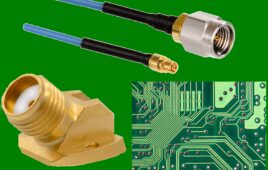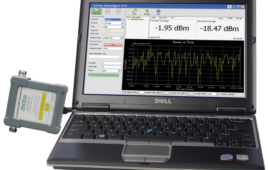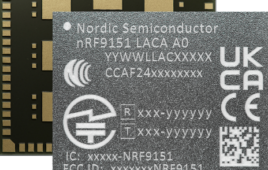The ams-SL13A NFC sensory tag validates the origin of any object, as well as verifies the environmental conditions to which that object was exposed.
 The need for sensory tags is growing exponentially, and the uses for them span across various industries and markets. From the construction history and condition of certain buildings, bridges, and roads, to recording patient medication consumption, sensory tags are important for validating the origin of any object, as well as verifying the environmental conditions to which that object has been exposed.
The need for sensory tags is growing exponentially, and the uses for them span across various industries and markets. From the construction history and condition of certain buildings, bridges, and roads, to recording patient medication consumption, sensory tags are important for validating the origin of any object, as well as verifying the environmental conditions to which that object has been exposed.
The SL13A from Austria-based ams is a single-chip NFC-V/RFID tag that incorporates sensory functionality in addition to providing a unique ID. The unique ID and sensor data can be captured with an RFID reader or an NFC-enabled phone with a dedicated app. According to Oluf Alminde, senior marketing manager for the power and wireless business unit, the concept for started with the blood bags that keep blood at a certain temperature when being transferred from one point to another.
“Putting the two technologies together – the unique ID from RFID, and the different sensors used for monitoring the product – not only allowed a unique ID for a specified object, but it also allowed that object to be monitored, providing crucial information of what the object was exposed to during transit.”
New Horizons for Complex Applications
By adding sensor functions to the NFC/RFID technology, new horizons are opened for complex applications, such as tracking and monitoring of objects and the surrounding environment in any location. Enriching RFID/NFC with sensors also reveals new intriguing applications, which include tracking condition and history of constructions, contactless metering, environmental monitoring, and many more.
Compared to existing technology on the market, the SL13A provides a solution for other supportive applications which deal with more complicated devices that require three or more integrated circuits and other discrete components. “Those particular devices are not very easy to use, and they are relatively expensive,” says Alminde.
Passive and Semi-Passive Modes
 The SL13A is based on NFC-V, enabling affordable data logging. It also incorporates a temperature sensor and an analog input for external sensors. It can time stamp events with its integrated, real-time clock (RTC), and it works in fully passive mode, as well as in semi-passive mode.
The SL13A is based on NFC-V, enabling affordable data logging. It also incorporates a temperature sensor and an analog input for external sensors. It can time stamp events with its integrated, real-time clock (RTC), and it works in fully passive mode, as well as in semi-passive mode.
The semi-passive mode can either consist of a user-controlled, on-board power source for the sensor, or a stand-alone mode for autonomous and long-term monitoring.
A battery helps support autonomous data logging with the on-chip RTC. Once the battery is exhausted, it can continue working in passive mode. In passive mode, a time stamp is provided by the reader, and the energy to the sensor is extracted from the reader’s field, maintaining previously stored data.
Because battery replacement or a physical connection is not required in passive mode, the SL13A can be embedded in various structures during manufacture, providing an unlimited operation lifetime. Such an advantage can help detect certain structural issues that can cause severe damage if left unnoticed.
No Need for New Infrastructure
Recently, with the fast deployment of NFC-enabled mobile phones, Alminde has seen an increasing interest in the SL13A. “There is no need to build up a new infrastructure because users already have an existing one with their mobile phones,” says Alminde. “The only thing users need to do is create an app, which they can use to collect and store data, and send it through their mobile network.”
 Compared to other wireless networks, the SL13A sensory tag offers:
Compared to other wireless networks, the SL13A sensory tag offers:
- Complete data logging on a single chip.
- Intuitive touch-based communication and interaction.
- Faster communication set-up latency.
- Longer battery lifetime, or even battery-less implementation.
- High immunity to eavesdropping and interference.
- Ability to add an app to an NFC-enabled mobile phone.




